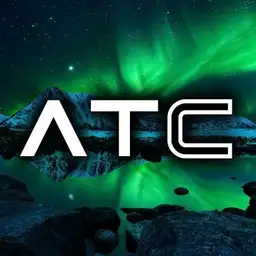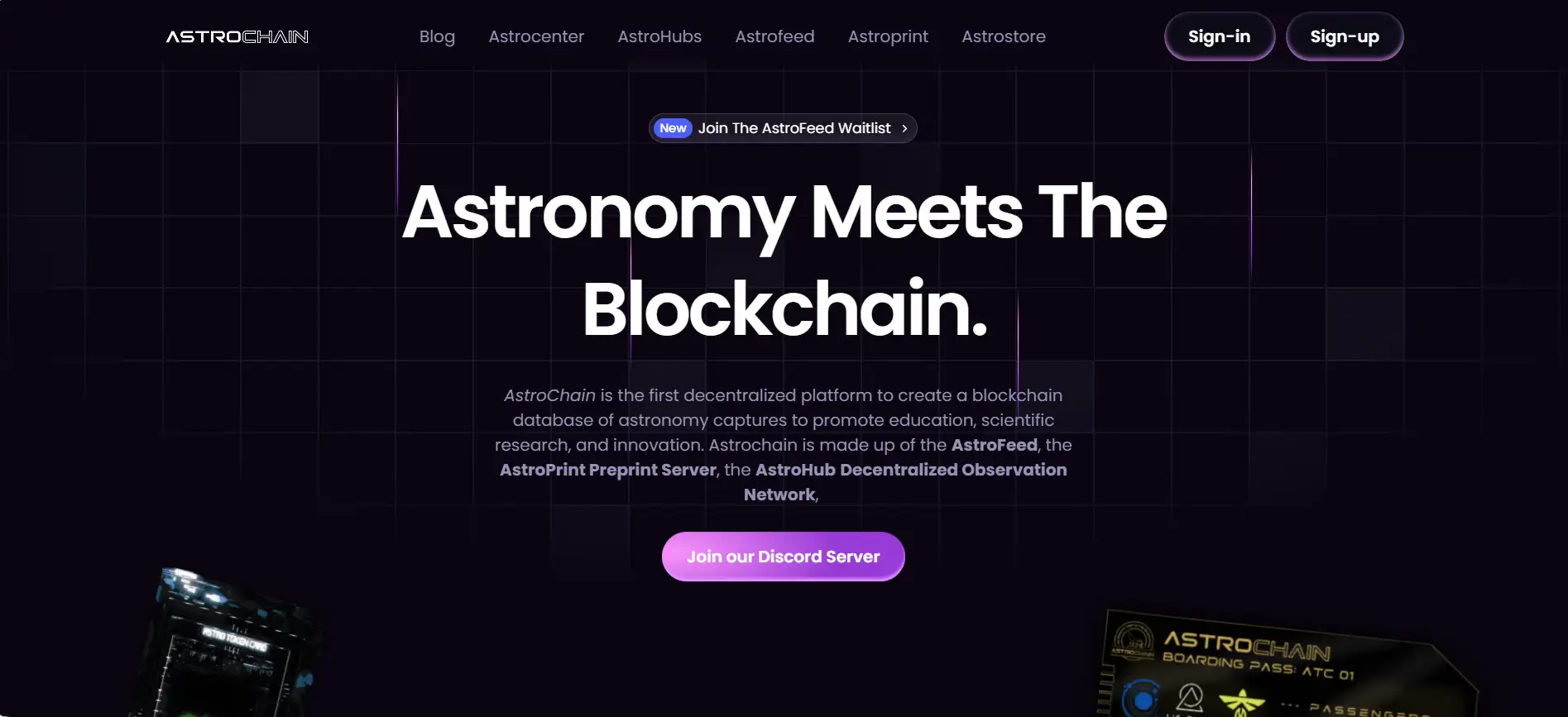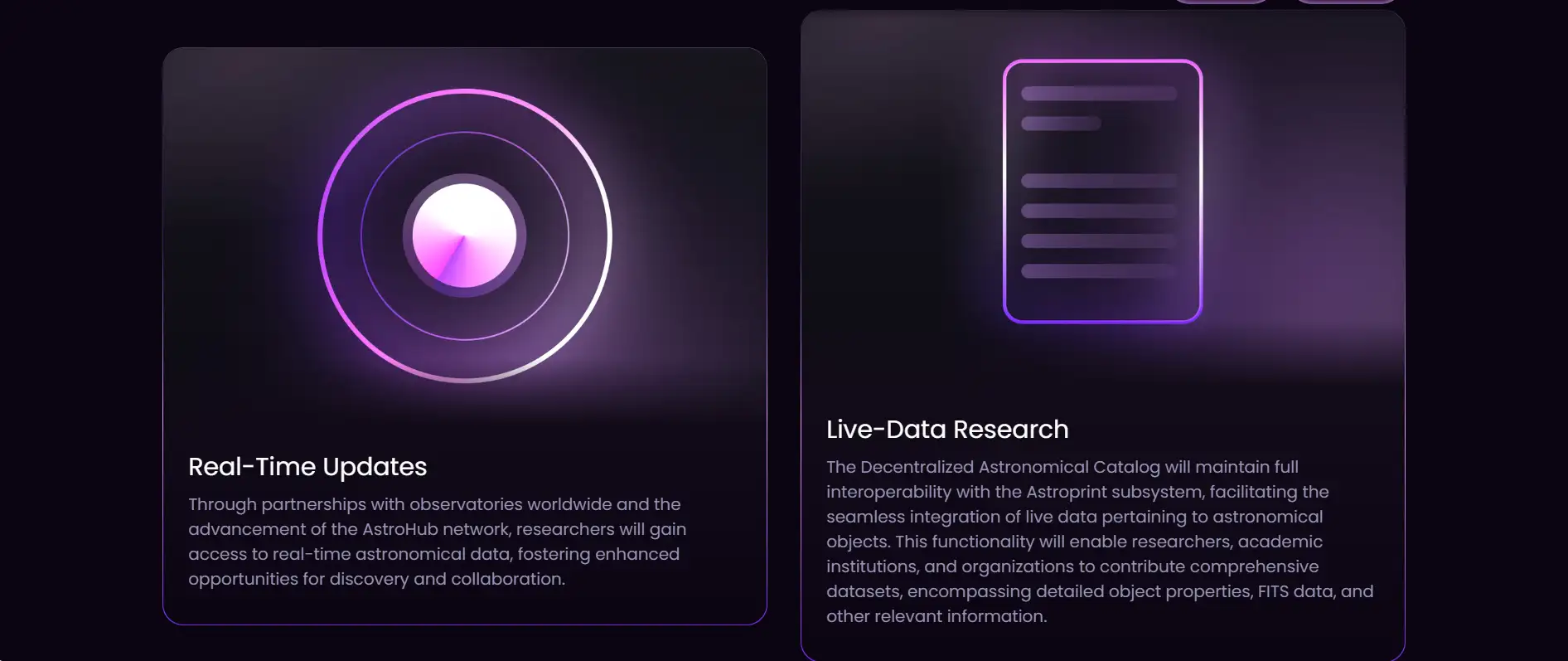About Astrochain
AstroChain is the first decentralized platform dedicated to storing and sharing astronomical data using blockchain technology. Designed for both amateur and professional space enthusiasts, it provides a secure, transparent, and innovative space where celestial captures are permanently recorded and accessible. AstroChain empowers users to mint astronomical data as NFTs, enabling data ownership, traceability, and monetization.
The project stands at the intersection of astronomy, education, and blockchain, offering tools like the AstroFeed, AstroPrint preprint server, AstroHub observation network, and the AstroCenter metaverse. By building a transparent and participatory platform, AstroChain brings the cosmos closer to Earth through the lens of decentralization and data sovereignty.
AstroChain is a visionary blockchain project launched to revolutionize the way astronomical data is captured, stored, and utilized. It seeks to serve a global community of researchers, astrophotographers, and space enthusiasts by offering a trustless, decentralized infrastructure for submitting and preserving celestial observations. Unlike traditional platforms where astronomical content is siloed, AstroChain uses a decentralized ledger to ensure data permanence, authenticity, and ownership.
At the core of AstroChain’s ecosystem is the AstroFeed, a decentralized social app where users can upload space-related imagery and video content. All contributions undergo authenticity checks and are minted as NFTs, ensuring contributors retain ownership rights. Content on the AstroFeed is linked to the AstroStore, a decentralized catalog of astronomical objects, creating a rich and reliable knowledge graph accessible to researchers and learners alike.
The project also features the AstroPrint server, a decentralized alternative to traditional academic preprint platforms. Researchers can publish and share findings in the form of NFTs, adding immutability and transparency to the scientific publication process. Meanwhile, the AstroHubs—an array of partner and standalone telescopic stations—contribute observational data in real-time, enriching the AstroChain catalog with high-fidelity imagery.
To unify the community, AstroCenter acts as a virtual metaverse venue where users can participate in lectures, workshops, and live observation events. Spanning 250,000 sqft virtually, it bridges scientific learning with Web3 engagement. AstroChain is backed by a diverse team of blockchain experts, researchers, and developers. Smart contracts across its ecosystem undergo regular audits, including from third-party firms like Blockem and, soon, Certik.
In terms of competitors, AstroChain is carving out a unique niche. While platforms like Zooniverse crowdsource scientific data and arXiv hosts preprints, none blend these functions within a decentralized NFT-based framework. AstroChain stands apart by offering data monetization, verifiable authenticity, and cross-functional tools for both public outreach and scientific rigor.
AstroChain provides numerous benefits and features that make it a groundbreaking platform in the blockchain-powered scientific space:
- Decentralized Astronomical Catalog: AstroStore stores linked celestial data on-chain, ensuring authenticity and immutability.
- AstroFeed Social dApp: Share and mint astronomical captures on-chain; users receive royalties and retain NFT-based ownership.
- AstroHubs Observation Network: Partnered and independent sky-surveying stations stream real-time sky data into the platform.
- AstroPrint Preprint Server: Publish academic findings using NFTs; integrated with AstroStore for long-term reference and transparency.
- AstroCenter Metaverse: A 250,000 sqft virtual hub for events, workshops, and observation sessions, fostering global community participation.
- Astro Token Cards (ATCs): ERC-721 NFTs that provide access to royalties, exclusive events, and partner observatories.
- Cross-Compatible Infrastructure: Supports both Web3 and traditional scientific workflows; ensures real-time sync and data export capabilities.
- Security Audits: All smart contracts are audited by firms like Blockem with future audits planned via Certik to uphold platform reliability.
AstroChain makes it easy for anyone to become a part of the astronomy and blockchain revolution:
- Visit the Website: Head to Astrochain.net and explore the main sections such as AstroFeed, AstroPrint, and AstroCenter.
- Create an Account: Click on “Sign Up” to register with your email and start interacting with the decentralized ecosystem.
- Mint Your First Capture: Upload astrophotography or celestial video content via AstroFeed. The system will mint it into an NFT post authenticity verification.
- Join the AstroHub Network: If you own or manage observation equipment, apply to be part of the AstroHub Network to contribute real-time astronomical data.
- Participate in the Metaverse: Access AstroCenter and attend virtual events, live lectures, or observation sessions from around the globe.
- Earn with Astro Token Cards: Purchase ATCs from the Astrochain Marketplace to unlock royalties, memberships, and exclusive content access.
- Stay Connected: Follow updates via the project’s blog or join the community on Discord to engage with fellow enthusiasts.
Astrochain FAQ
AstroChain enforces data authenticity through an automated verification process before any submission is minted on the blockchain. Every image or video uploaded to the AstroFeed undergoes authenticity checks to ensure it’s unedited and valid. Once verified, the asset is stored as an NFT on-chain, permanently linking ownership and metadata. This ensures trust and traceability for both amateur and professional contributions. Learn more at Astrochain.net.
The AstroPrint server provides a decentralized alternative to academic repositories like arXiv by letting researchers publish their work as NFTs that are verifiable and immutable. Submissions are linked to the AstroStore catalog, ensuring long-term reference integrity and enabling Web3-native citations. This model not only ensures authenticity and ownership, but also introduces potential monetization through NFT royalties. Explore the system at AstroChain.
Yes, contributors can earn royalties through the AstroFeed. Once a capture is submitted and minted as an NFT, it becomes available for public view, use, or licensing. Any activity that generates revenue—such as views, sales, or reuse—can contribute to royalty payouts for the original owner. These earnings are distributed automatically via smart contracts, ensuring a trustless and transparent reward mechanism. Visit Astrochain.net to start minting your work.
Astro Token Cards (ATCs) are ERC-721 NFTs that provide holders with exclusive benefits. Depending on the card tier, holders can earn a share of AstroFeed dApp royalties, gain AstroCenter membership access, or receive perks from partner institutions and observatories. These cards are not just collectibles—they’re functional membership assets that tie utility to community participation. Buy, trade, and earn through ATCs by visiting the AstroChain Marketplace.
AstroHubs are a distributed network of sky-scanning stations and partner observatories that continuously collect celestial data. This includes events like meteor showers, satellites, UAPs, and astronomical anomalies. All data is funneled into the AstroStore and integrated with the AstroFeed, making it available for scientific analysis, public use, and real-time exploration. They are the backbone of AstroChain’s open science infrastructure.
You Might Also Like












